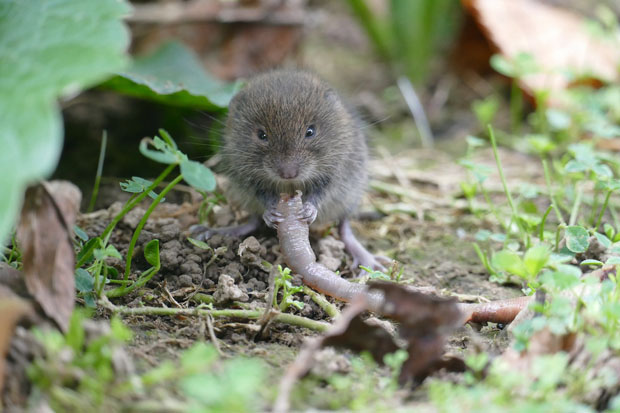Comprehensive Guide to Reliable Vole Insect Control: Infestation Identification and Therapy Approaches
In the world of effective bug control, vole problems position an unique challenge that requires a critical method. By discovering the nuances of vole behavior, comprehending essential signs of problem, and evaluating a range of control alternatives, one can develop an extensive method to battle these evasive insects.
Comprehending Vole Actions
Vole actions is identified by their tunneling routines and quick recreation rates, making them a tough pest to control efficiently. These little rodents generally develop detailed passage systems underground, utilizing them for shelter, food storage, and transportation. Voles are herbivores, taking in a selection of plants, yards, light bulbs, and roots, which can trigger significant damage to gardens, orchards, and grass. Their quick reproductive price additional complicates control efforts, with females with the ability of generating numerous trashes in a single year, each including a number of offspring.
Voles are most energetic during the very early morning and evening hours, spending most of their time foraging for food. Their tunneling habits not just disturb gardens and grass but also make them testing to eliminate and identify. Recognizing vole habits is essential for reliable insect control methods. By determining their burrow locations, monitoring feeding areas, and implementing targeted control approaches, such as trapping or habitat modification, vole problems can be handled effectively.
Signs of Vole Invasion

Prevention Methods
Implementing efficient prevention techniques is vital in minimizing vole invasions and protecting greenery from their damaging feeding practices. To stop vole infestations, it is crucial to begin by eliminating possible food resources and sanctuary.
Routinely evaluating the building for signs of vole activity, such as paths and tunnel openings, is important for very early detection and punctual action. Take into consideration utilizing repellents or traps tactically placed near their paths if vole activity is believed. Employing all-natural predators like serpents or owls can also aid maintain vole populations in check. By applying a combination of these avoidance homeowners, gardeners and methods can efficiently shield their vegetation from vole damage.
Non-Lethal Control Techniques
To properly manage vole populaces while prioritizing humane techniques, non-lethal control approaches offer practical options for lowering vole damage in landscapes and gardens. One reliable technique is using physical barriers such as hardware fabric or cable mesh to protect susceptible plants. These barriers can be buried a minimum of 12 inches deep and curved at a 90-degree angle to avoid voles from burrowing underneath. Additionally, environment modification can discourage voles by decreasing their chosen food sources and hiding areas. Preserving a well-mowed yard, removing debris, and maintaining vegetation cut can make the setting much less enticing to voles.
Lethal Control Options
One efficient approach for attending to vole infestations in landscapes and yards includes the tactical use of deadly control options. When confronted with an extreme vole infestation that non-lethal approaches have stopped working to have, carrying out deadly control measures ends up being crucial. One frequently used deadly control option is using breeze catches. These catches are made to quickly and humanely kill voles upon activation, making them a prominent selection for many gardeners and landscaping companies. To raise the effectiveness of snap catches, it is advised to put them in locations where vole task is high, such as along paths or near burrow entries. An additional dangerous control option is the usage of hazardous lures particularly developed to target voles. These baits have poison that is ingested by the voles, leading to their ultimate death. However, care should be exercised when using poisonous baits to avoid injury to non-target pets or pet dogs. In general, when utilizing lethal control options, it is important to do so properly and in conformity with neighborhood guidelines to successfully handle vole invasions.
Final Thought
To conclude, reliable vole pest control calls for a thorough understanding of vole habits, recognition of indications of problem, application of prevention methods, and usage of both non-lethal and lethal control approaches. By incorporating these approaches, people can successfully take care of vole populations and secure their property from damage. It is necessary to deal with vole problems quickly to avoid more issues and lessen the influence on the surrounding setting.
Provided the detailed tunnel systems and rapid reproduction prices characteristic of voles, identifying the signs of vole invasion ends up being essential in reliable bug control. One of the primary signs of vole visibility is the presence of surface area runways or tracks in lawn or snow, typically about 1-2 inches broad, created as voles take a trip in between their burrows and food resources.To properly manage vole populations while focusing on gentle techniques, non-lethal control strategies offer useful solutions for lowering vole damages in landscapes and gardens.One effective approach for dealing click resources with vole invasions in landscapes and gardens involves the calculated usage of dangerous control about his alternatives. vole lawn damage.In final thought, reliable vole pest control requires a thorough understanding of vole actions, identification of indicators of infestation, execution of avoidance approaches, and application of both non-lethal and lethal control methods